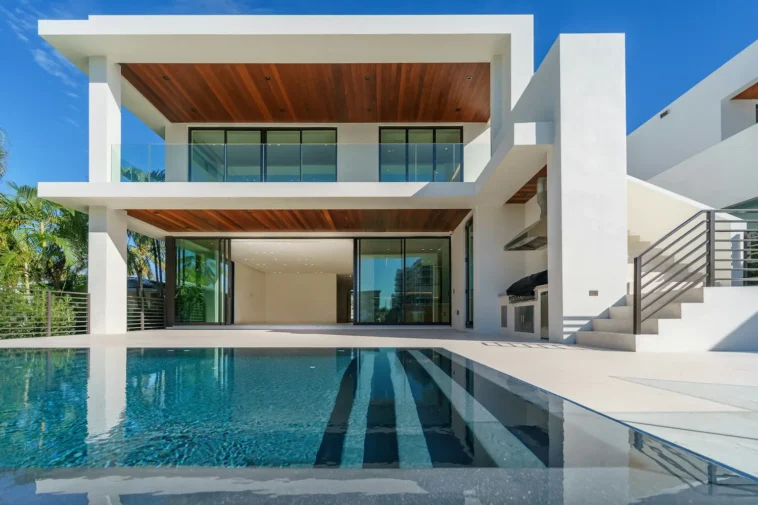The quest for enhanced comfort and energy efficiency in modern homes is leading to significant advancements in residential temperature control systems. These systems are not just about maintaining a pleasant indoor climate; they are also about integrating state-of-the-art technology that aligns with the sleek, modern aesthetics of contemporary architecture. This article explores the crucial role of innovative temperature solutions in modern home designs, focusing on how they meet both functional and aesthetic requirements.
In today’s energy-conscious world, homeowners and builders alike prioritize solutions that provide comfort without the heavy energy costs associated with traditional heating and cooling methods. Efficient temperature control is therefore a key component in the design of new homes, affecting decisions from the planning stage all the way through to daily living.
Assessing Modern Home Temperature Requirements
Modern homes, characterized by their unique architectural features and building materials, present specific challenges for temperature control. Factors such as increased window-to-wall ratios and open-plan designs often require more sophisticated heating and cooling strategies to maintain comfortable and consistent indoor temperatures. The role of technology in achieving these goals is becoming increasingly significant, as advanced systems can adapt to these architectural nuances more efficiently than traditional methods.
Environmental considerations also play a pivotal role in shaping the requirements for modern home temperature control. The push towards sustainable building practices encourages the use of advanced insulation methods and passive solar designs that optimize energy use and enhance indoor environmental quality. These techniques not only help stabilize indoor temperatures but also significantly reduce the dependency on active heating and cooling systems, promoting a greener living environment.
Benefits of Innovative Temperature Solutions
The implementation of advanced temperature control systems in homes brings substantial benefits, particularly in terms of energy efficiency and cost savings. Systems equipped with smart technology, such as programmable thermostats, can significantly reduce energy consumption by adapting to the homeowner’s lifestyle and adjusting temperatures according to real-time needs. This capability not only ensures optimal comfort but also lowers utility bills, making it an attractive option for eco-conscious homeowners.
Beyond energy savings, these innovative systems enhance the overall value of a home by improving its sustainability credentials. In an era where environmental impact is a major concern, homes designed with efficient, smart temperature solutions are likely to hold greater appeal in the real estate market, offering long-term benefits that go beyond mere comfort.
Technologies for Efficient Climate Control
Among the various technologies available today, centralized systems provide comprehensive control over a home’s climate, making them suitable for larger properties with complex layouts. Conversely, zonal units offer customized control over specific areas or rooms within a home, allowing for detailed temperature management and further energy savings. Hybrid systems that combine features of both centralized and zonal solutions provide a versatile option that can be tailored to meet the specific needs of any home.
The use of PTAC units, such as Amana PTACs, traditionally seen in commercial settings, is also gaining traction in residential applications, particularly in extensions or areas requiring independent temperature control. These units offer a practical solution for adding heating and cooling capacity without the need for extensive ductwork, making them ideal for retrofitting older homes or integrating into new additions.

Design Considerations for Seamless Integration
Incorporating temperature control systems into a home’s design should not compromise its aesthetic integrity. Modern systems are designed with a focus on minimalism, often featuring sleek interfaces that blend seamlessly with a variety of interior styles. Strategies for integrating these systems include positioning vents and thermostats strategically to ensure they complement rather than disrupt the home’s design theme.
Designers and architects now frequently work hand in hand with HVAC professionals to ensure that these systems are not only effective but also integrated in ways that enhance the home’s overall design. Whether hidden behind customizable facades or incorporated into home automation systems, the goal is to maintain design fluidity while providing easy access and control.
Comparative Analysis of Temperature Control Options
When evaluating different temperature control systems, it’s important to consider how each system aligns with the architectural characteristics of the home and the specific needs of its inhabitants. Centralized systems might be more appropriate for new constructions where ductwork can be integrated into the initial design, whereas retrofit projects might benefit from the less invasive installation of PTAC units or mini-split systems.
Each option presents its own set of advantages and limitations in terms of cost, complexity of installation, and impact on interior design. A thorough comparative analysis helps homeowners make informed decisions based on a clear understanding of how these systems will perform in their specific architectural and environmental context.
The Future of Home Temperature Control
The future of home temperature control looks promising with ongoing advancements in IoT and AI technologies. These technologies are set to revolutionize the way temperature control systems interact with other home systems, offering even greater efficiencies and personalized comfort settings. Anticipated developments include more advanced sensors that can predict weather changes and adjust indoor temperatures preemptively, as well as systems that learn from user behavior to optimize energy use without manual input.
Such innovations not only promise enhanced comfort and lower energy costs but also signify a shift towards fully integrated smart homes. As these technologies become more accessible, they will play a crucial role in shaping the sustainable homes of the future, making advanced temperature control a standard feature in modern home design.
The integration of efficient temperature control systems is essential for modern homes, not just for comfort and energy efficiency but also for enhancing the property’s value and appeal. Homeowners are encouraged to explore various options, considering both technological innovations and their integration into home design, to ensure they select the best solutions to meet their needs. With careful planning and consideration of future trends, homeowners can effectively integrate these systems into their homes, achieving a balance between functionality and style.




